Changxing County, Huzhou City, Zhejiang Province
Datang Tribute Tea House in Changxing County
Located in Guzhu Village, Shuikou Township, it was first established in 770 AD during the Tang Dynasty. It is recognized as the first "royal tea factory" in Chinese history, dedicated to processing tea for the imperial court. Designated as a national key cultural protection unit, the Guzhu Mountain Tribute Tea House was unparalleled in scale, tribute volume, and influence during the Tang Dynasty. From 770 AD until the Qing Dynasty, the tribute of Zisun tea continued, marking a 876-year history of tea tribute. The site experienced periods of prosperity and decline. By the late 1930s, the temple's plaque still remained, but it was later destroyed by fire, leaving only a three-section ruin.
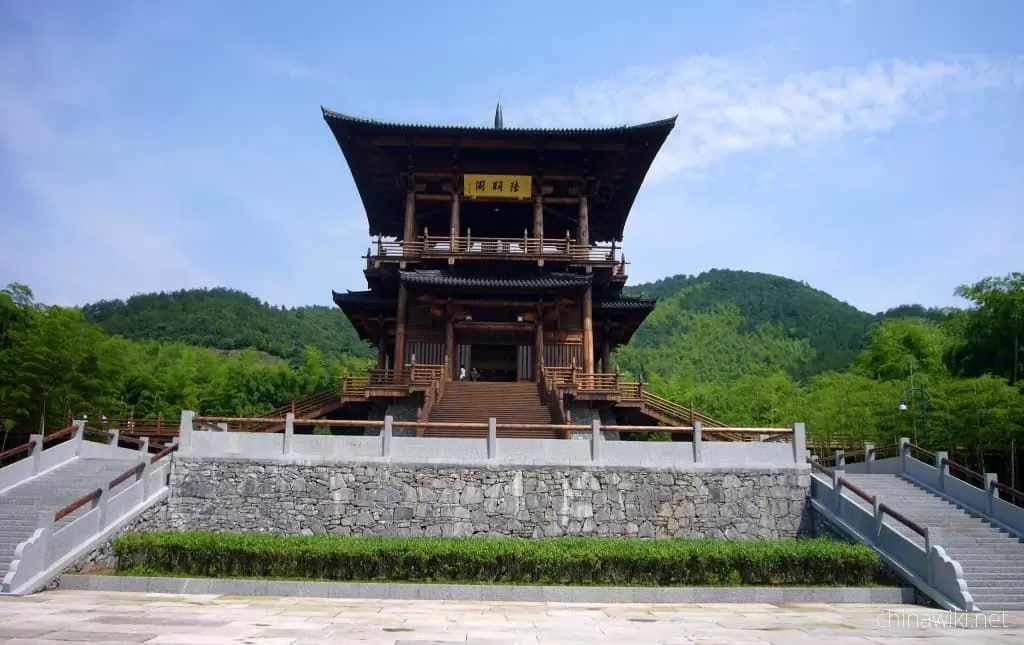
New Fourth Army Suzhou-Zhejiang Military Region Memorial Hall in Changxing County
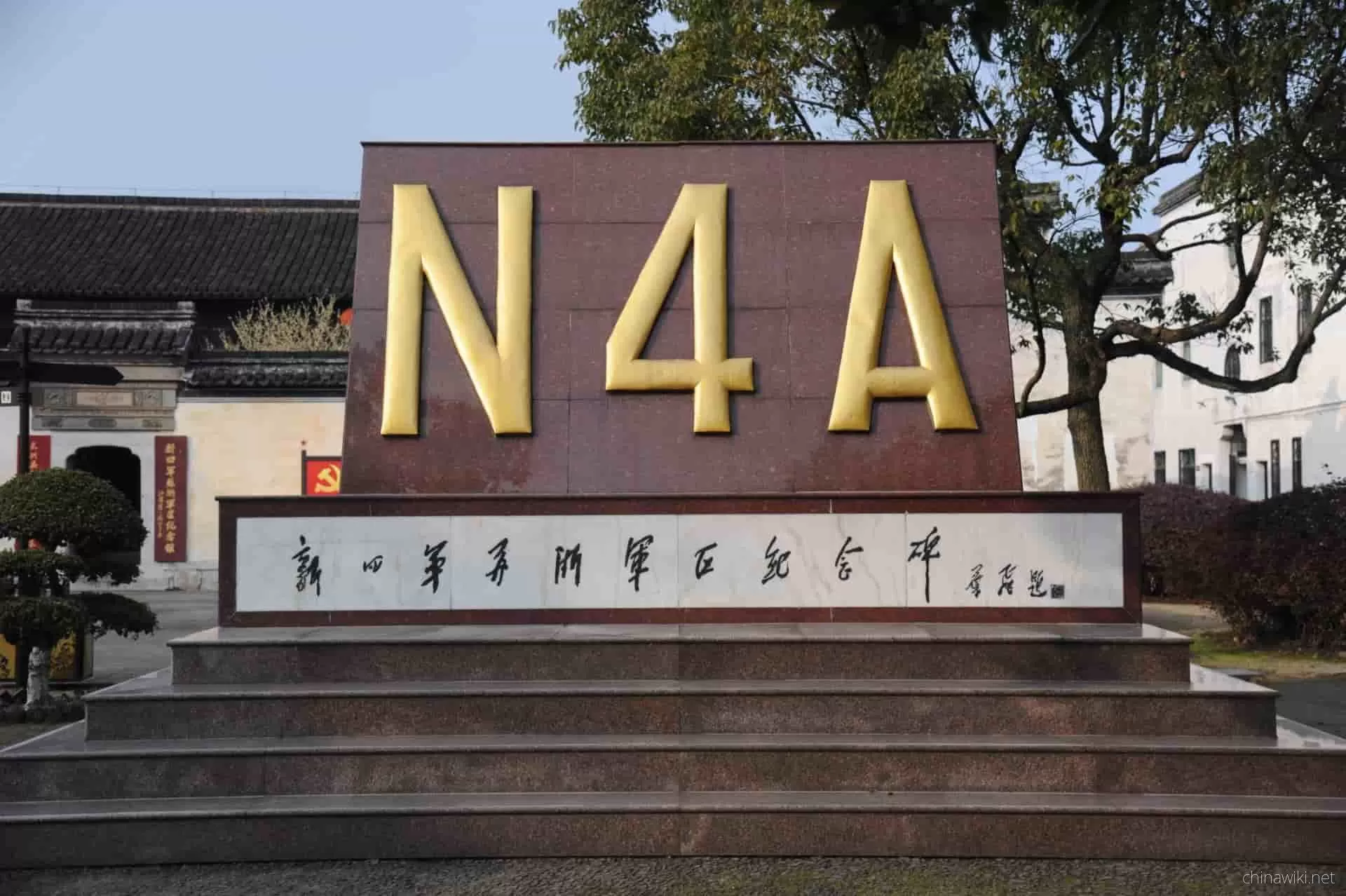
Situated in Wentang Village, Huaikan Township, the memorial hall was originally a wealthy family's residence during the Xianfeng era. The site was declared one of Zhejiang Province's first key cultural protection units in 1961. In 1976, the Cultural Preservation Office of the New Fourth Army Suzhou-Zhejiang Military Region Headquarters was established. After the death of Comrade Su Yu in 1984, part of his ashes were scattered on the west side of the square in front of the site, where a tombstone and a statue of Su Yu were erected. It was listed as a provincial key cultural protection unit. In 1985, the memorial hall was officially established, with its name inscribed by Jiang Weiqing. On June 25, 2001, the New Fourth Army Suzhou-Zhejiang Military Region Site (including 15 points) was designated as a national key cultural protection unit by the State Council. It is also a national AAAA-level tourist attraction, a national youth education base, a Zhejiang Province patriotic education base, a national defense education base, a classic red tourism site for Zhejiang youth, and a national patriotic education demonstration base.
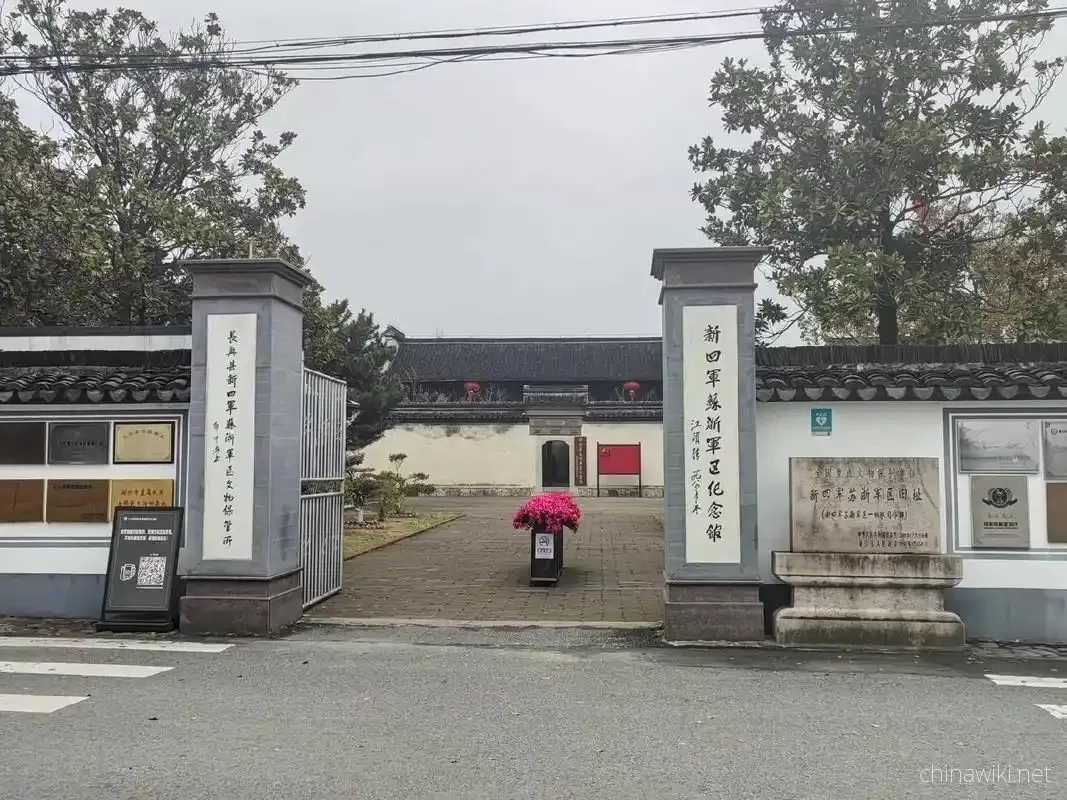
Emperor Chen's Palace in Changxing County
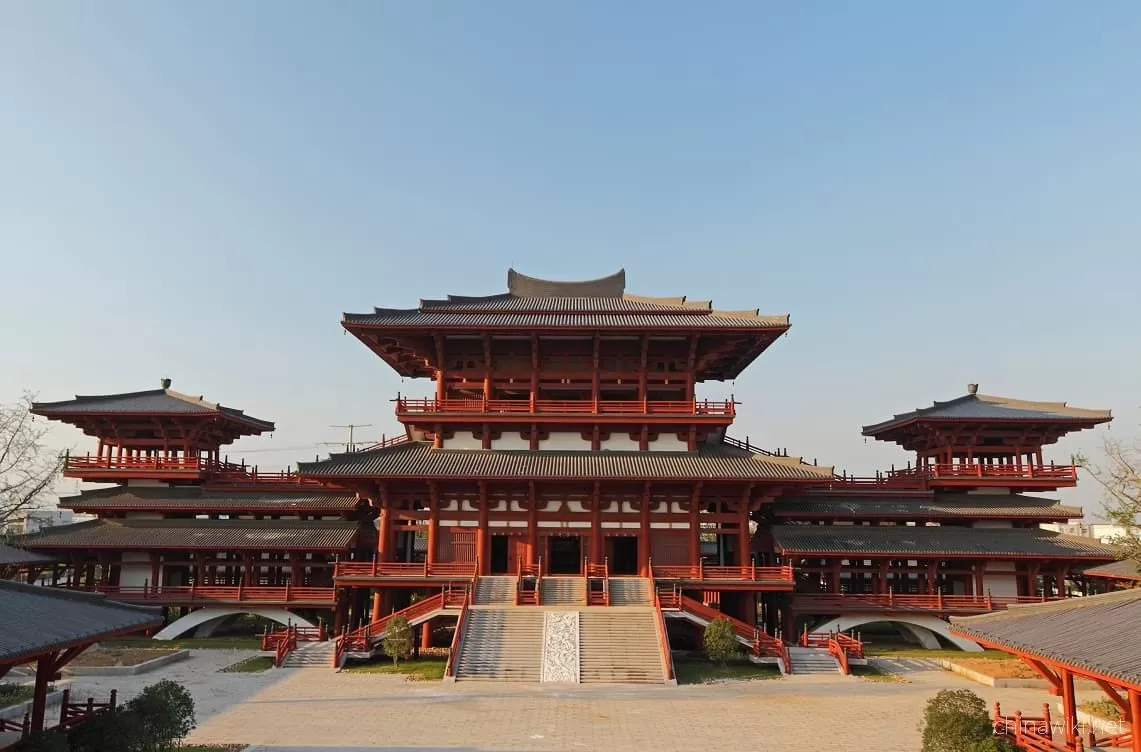
This was the residence of Chen Baxian, the founding emperor of the Chen Dynasty during the Southern Dynasties. Due to the flourishing of Buddhism during that era, the palace was renamed "Xiaruo Temple" and became one of the four major Buddhist temples in Jiangnan. In 2010, the Changxing County government initiated the reconstruction project of Emperor Chen's Palace. The scenic area covers 126 acres and consists of three parts: Emperor Chen's former residence, Tianju Temple, and the遗址公园 (ruins park). With a total investment of 180 million yuan, it is a comprehensive cultural tourism destination integrating leisure shopping, tea tasting, entertainment, study, and sightseeing. It is also the only tourist attraction in Changxing's main urban area.

Golden Nail Ancient World Scenic Area in Changxing County

This site preserves complete information about the largest mass extinction event in Earth's history 250 million years ago. It holds significant importance for understanding Earth's history and exploring the mysteries of biological evolution. The scenic area features an ancient-style geological gate, a high-tech Golden Nail Museum integrating sound, light, and electricity, the world's most dynamic 4D special effects theater, a Golden Nail leisure square, a natural section from 250 million years ago, an ancient wind well, and an exhibition hall showcasing diverse ancient wood fossils. The most significant exhibit is an enlarged model of a conodont fossil, a landmark fossil marking the boundary between the Paleozoic and Mesozoic eras 250 million years ago. It has become a key reference for scientists worldwide and was designated as a global Golden Nail by the International Union of Geological Sciences.
Ten-Mile Ancient Ginkgo Boulevard in Changxing County
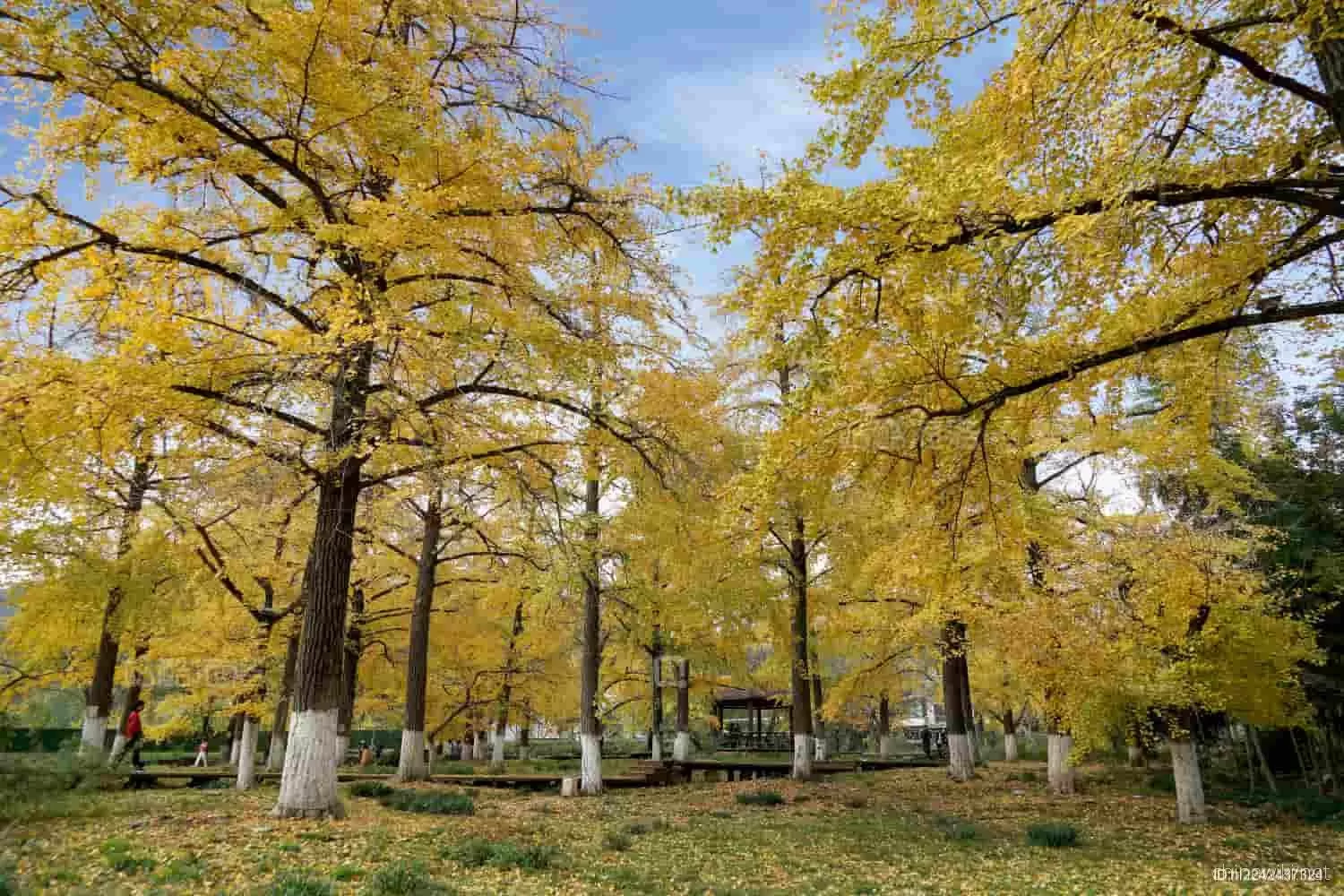
Located in Badu Valley, Xiapu Town, the boulevard is surrounded by green mountains and a flowing stream. It stretches about 12.5 kilometers long and ranges from 5 kilometers to 500 meters wide. Scattered along the boulevard are 30,000 wild ginkgo trees, including over 2,700 ancient trees more than a century old. Legend has it that Liu Xiu of the Han Dynasty once hid here from pursuing soldiers eight times, giving the valley its name. Emperor Chen Baxian of the Southern Dynasties once fished at Sicheng Pond, and the Song Dynasty poet Yang Wanli wrote poems about the ginkgo trees here. On the mountain lies the tomb of Yang Zhonggeng.
Xianshan Lake in Changxing County
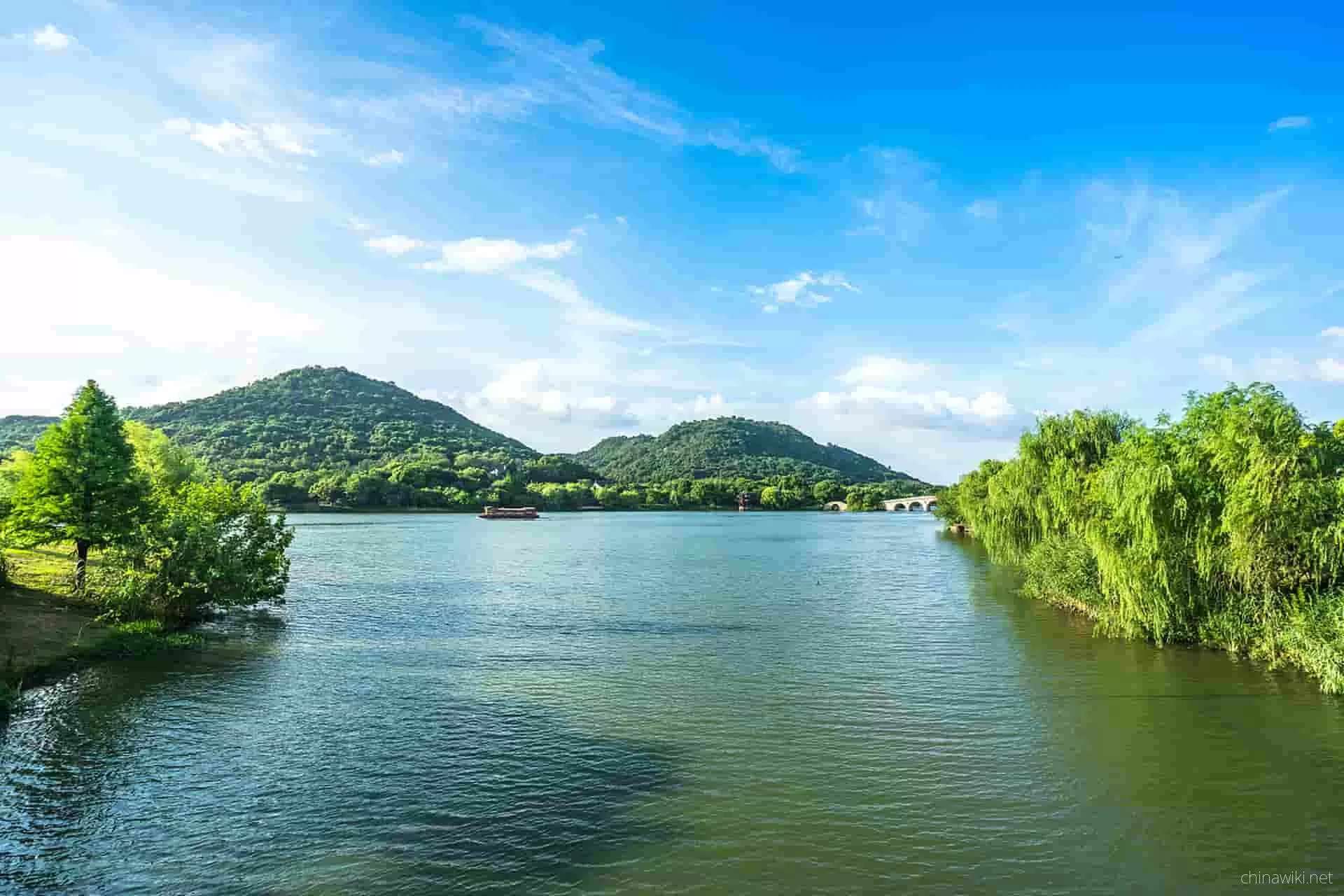
Composed of Xianshan Mountain and Xianhu Lake, this area boasts an excellent ecological environment, with vegetation, wetlands, animals, and cultural elements forming a rich ecological chain. At the foot of Xianshan Mountain lies the ancient human origin site dating back 400,000 years and the Maqiao cultural site from 3,500 years ago. A group of ancient tombs from the Spring and Autumn and Warring States periods is also located on the north side of Xianshan Mountain. The lake, adjacent to the mountain, covers an area of about 10 square kilometers. A long causeway runs east-west through the lake, dividing it into northern and southern sections. Xianshan Lake is not only known for its beautiful scenery but is also the largest wetland in northern Zhejiang, featuring unique landscapes and abundant biodiversity.
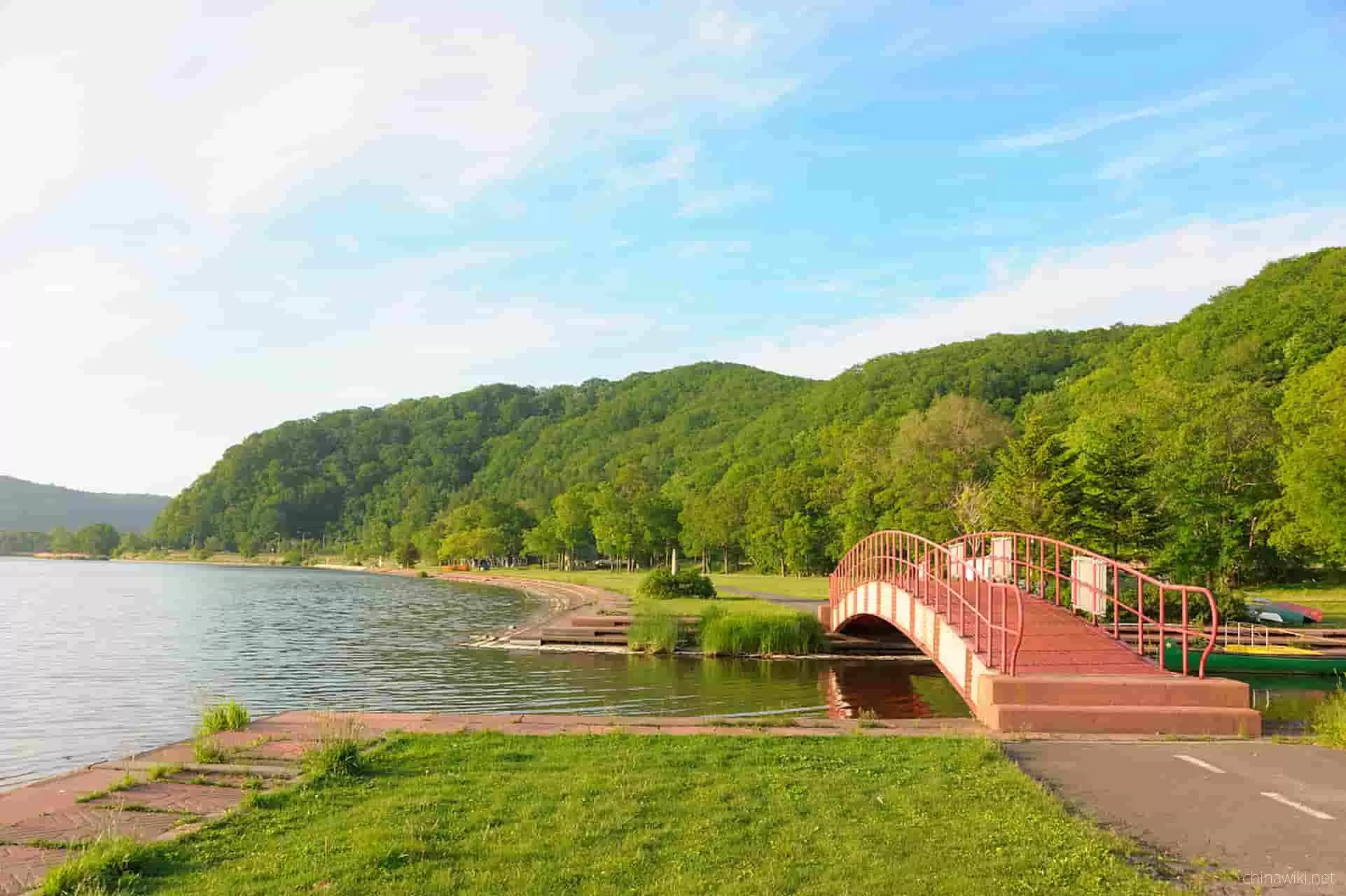
China Alligator Village in Changxing County
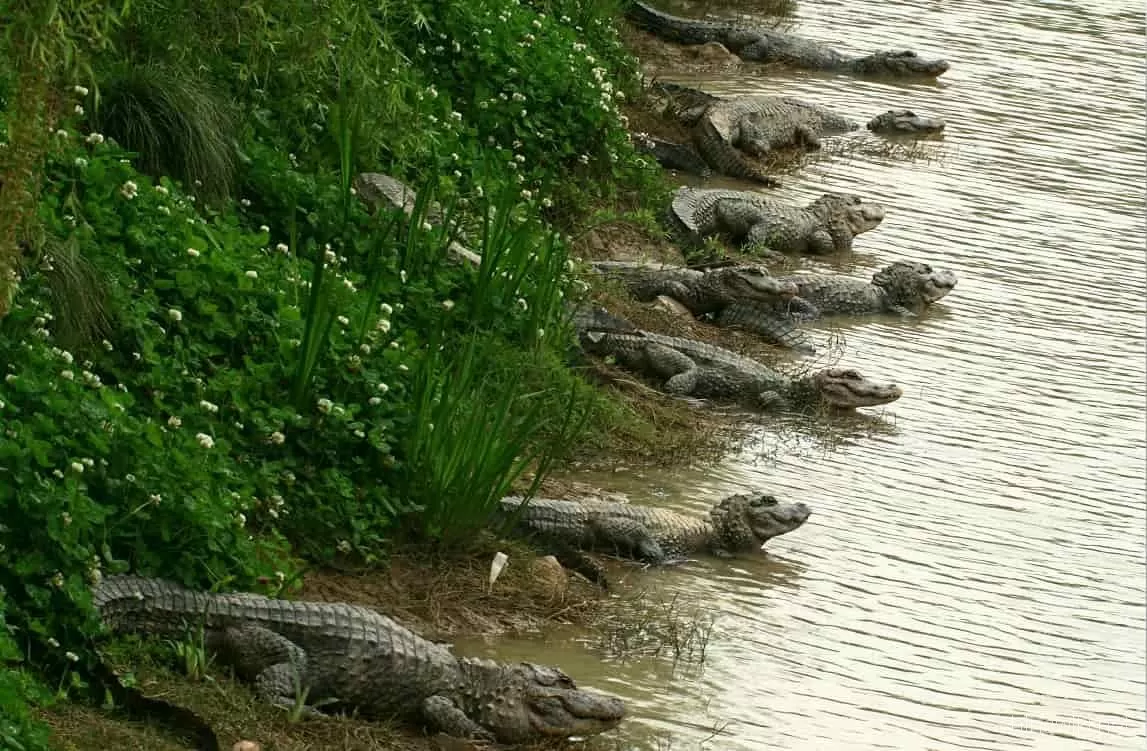
Located in Xinxing Village, Lincheng Town, in the southwest of Changxing County, the scenic area is home to over 4,000 Chinese alligators and covers an area of more than 500 acres. It is renowned as the "Hometown of the Chinese Alligator." Since its opening, the park has continuously developed, offering interactive activities such as alligator performances, a children's playground, agricultural picking, and alligator-watching tours. It has become a multifunctional scenic area integrating wetland exploration, science education, historical exploration, and leisure tourism. The park has been awarded titles such as "National AAAA-Level Scenic Area," "National Science Education Base," "Zhejiang Province Ecological Moral Education Base," "Most Beloved Scenic Park by Tourists," "Zhejiang Province Forestry Sightseeing Park," and "Zhejiang Province Science Education Base."
Introduction to Changxing County
Changxing County is a region rich in cultural heritage and natural beauty, offering a diverse range of historical sites, ecological attractions, and educational experiences. From the ancient tea houses and imperial palaces to the unique geological landmarks and vibrant wetlands, Changxing County provides a comprehensive glimpse into China's history, culture, and natural wonders.
Changxing County Changxing County, subordinate to Huzhou City, Zhejiang Province, is located in the north of Zhejiang Province, the Yangtze River Delta Hangjiahu Plain, and the southwest Bank of Taihu Lake. It borders Anji County, Wuxing District of Huzhou City, Guangde city of Anhui Province, Yixing City of Jiangsu Province, and the three provinces of Jiangsu, Zhejiang and Anhui. It is between 30 ° 43 ′ - 31 ° 11 ′ N and 119 ° 33 ′ - 120 ° 06 ′ e with a total area of 1430 square kilometers.
Changxing was called the Great Wall in ancient times. In the spring and Autumn period (514-495 BC), King Helu of Wu sent his brother-in-law to build a city two Li southeast of today's pheasant city as the capital of King Fu. Because the city is long and narrow, it is called the Great Wall, which has a history of more than 2500 years.
As of 2018, Changxing County had 4 streets, 9 towns and 2 townships, with a total population of 636 thousand and 400 registered residence, and realized 60 billion 978 million yuan of Gross Regional Product (GDP). Among them, the value added of the primary industry was 3 billion 339 million yuan, the second industry added value 30 billion 41 million yuan, third industries added value 27 billion 597 million yuan, three industries accounted for 5.47:49.27:45.26, and the per capita GDP was three based on registered residence population. Yuan, converted to 14501 US dollars at the average exchange rate. It was awarded the top 100 counties in business environment, the second batch of counties (districts) with water-saving society construction standard, and top 100 counties and cities in tourism in China in 2019. In November 2020, it will be included in the list of China's top 100 industrial counties (cities) in 2020. In December 2020, the Academy of Social Sciences released the "top 100 comprehensive competitiveness of county economy in China", ranking Changxing 30th.
Historical evolution
Changxing County belonged to Wu in the spring and Autumn period. King Helu of Wu sent his younger brother to build the city here. The city is long and narrow, which is called the Great Wall. Later, it belonged to Yue and was destroyed by Chu, so it belonged to Chu.
In the Qin Dynasty, in the 26th year of the first emperor of Qin Dynasty (221 BC), it was divided into 36 counties, belonging to Kuaiji county.
In the Western Han Dynasty, in the sixth year of emperor Gaozu (201 BC), Liu Jia was appointed king of Jing, belonging to the state of Jing; in the twelfth year of emperor Gaozu (195 BC), Liu Zhen was appointed king of Wu, belonging to Wu. In the third year of emperor Jing of the Han Dynasty (154 BC), Wu Wang Zhen was killed for his rebellion in Wucheng County, Kuaiji county.
In the fourth year of Yongjian in the Eastern Han Dynasty (129), the branch was set up in Wujun, which is located in Wujun.
In the first year of Wu Baoding (266), Wu Danyang was divided into Wuxing county and Wucheng County in the Three Kingdoms.
In 282, the third year of Taikang, Emperor Wu of the Western Jin Dynasty, great wall county was established in Wuxing county. In the first year of Yongxing (304), the North Township of the Great Wall was divided into Yixiang county and Yixing county.
In the Southern Dynasties, song, Qi, Liang and Chen belonged to Wuxing county. In 555, Emperor Liang Jingdi established Zhenzhou in Wuxing, which was still named Wuxing county.
In the Sui Dynasty, in the ninth year of kaihuang (589), Chen was destroyed, Wuxing county was destroyed, and the Great Wall was merged into Wucheng County, which belongs to Suzhou. Renshou two years (602), the restoration of the great wall county, Huzhou. Daye two years (606) state waste, still belong to Wu county (in Suzhou years). At the end of Sui Dynasty (618), Shen FA established Changzhou.
In the Tang Dynasty, in 621, Emperor Gaozu of the Tang Dynasty set up Suizhou, in 623, Fu Gong Hu changed his name to Chizhou, and became a member of Yuanxiang county. In 624, Chizhou was abandoned and Anji and Yuanxiang entered the Great Wall. In the first year of Linde (644), Anji County was restored. In the first year of Tianbao (742), Huzhou was changed to Wuxing county. In the early Qianyuan period (759), Huzhou was restored, and the name of the county remained unchanged.
In 908, Qian Liu, the king of Wu and Yue, changed Changcheng county to Changxing County instead of Zhu Cheng, the father of Zhu Wen, the Taizu of Hou Liang.
In the third year of the Taiping and Xingguo period (978) of the Northern Song Dynasty, Wu and Yue took over the land and set up two Zhexi roads. The name of the prefecture and county is old.
In the first year of Baoqing (1225) of the Southern Song Dynasty, Huzhou was transformed into Anji Prefecture, and its leading County remained unchanged.
In 1276, anjizhou, the Zhaoqing army, was changed to the Huzhou pacification department, and was subordinate to the governor's office of Zhejiang Province. In 1277, it was Huzhou Road, belonging to Huzhou road. In the first year of Yuanzhen (1295), the county was upgraded to Changxing state, still belonging to Huzhou road. In 1357, Geng Bingwen changed his name from Changxing to Chang'an Prefecture, belonging to Anji County. In 1362, it was renamed Changxing Prefecture.
In the second year of Hongwu in the Ming Dynasty (1369), Changxing Prefecture was demoted as a county and subordinate to Huzhou Prefecture. In the first year of Hongzhi (1488), the magistrate Wang Zhen established Xiaofeng county with nine townspeople such as Anji and Xiaofeng, and then cut the southern border of Changxing into Anji, Shunling, Yanzi and Jingxi.
In June of the second year of Shunzhi (1645) of the Qing Dynasty, the king of Henan conquered the south of the Yangtze River, and Zhang Shiyuan, the commander in chief, decided Huzhou, which was the capital of Huzhou, the chief political officer of Zhejiang Province.
In February 1912, the first year of the Republic of China, Changxing was directly under the jurisdiction of Zhejiang Province. In the third year of the Republic of China (1914), the road was set up, and Changxing belonged to Qiantang road. In 1927, Tao was abolished and Changxing was subordinate to Zhejiang provincial government. On November 25, 1937, the Japanese army occupied Changxing, and the county government withdrew to the western mountainous area, belonging to the office of the administrative inspector general of the Second District of Western Zhejiang. In December 1943, the 16th brigade of the New Fourth Army in the south of the Yangtze River entered langxinian, guangdenian and Changxing from Yi and Li, and opened up Anti Japanese base areas behind the enemy lines to the north of Changsi line and to the west of Hangning line. In April 1944, the Anti Japanese democratic government of Changxing County was established in Huaihua County, which was subordinate to Langguang District of Southern Jiangsu administrative office. On August 19, 1945, the New Fourth Army recaptured Changxing City, and the county government moved to the county, which was subordinate to the administrative office of Southern Jiangsu District. At the end of September of the same year, the county government withdrew with the army. On October 10, 1945, the KMT county government moved to Changxing City, which belongs to the second district administrative office of Zhejiang Province.
On April 26, 1949, the Chinese people's Liberation Army liberated Changxing. On May 16, Changxing County People's government was established, which was subordinate to the first district commissioner's office of Zhejiang Province (changed to Jiaxing District Commissioner's office in April 1951). In November 1967, Changxing County Revolutionary Committee was established, belonging to Jiaxing regional Revolutionary Committee. In July 1980, the people's Government of Changxing County was restored, which was subordinate to the Jiaxing regional Commissioner's office. In October 1983, the special office was removed and the city was in charge of the county, which was subordinate to Huzhou City.
administrative division
Division evolution
In 1956, Changxing County was divided into two towns, Chicheng and Si'an, and 30 townships.
In October 1958, the people's commune movement abolished the township system and implemented the integration of government and society.
At the end of 1961 and the spring of 1962, the grand commune was abolished, Changxing County was divided into 32 people's communes, and the organizational system of Chicheng and Si'an town was restored. In April 1980, guandai people's commune was divided into two communes: Si'an commune and guandai commune. In July, Changxing County People's government was restored, which was subordinate to Jiaxing regional Commissioner's office.
In February 1981, the organizational system of the people's commune of lijiaxiang was abolished, and its brigade was assigned to lijiaxiang town. So far, Changxing County has 32 communes and 3 towns.
In October 1983, the special office was removed and the city was in charge of the county, which was subordinate to Huzhou City. In 1983, Changxing County changed "people's commune" to "township people's government", and designated Wanqiao Township from tianpingqiao township.
In July 1984, Chengjiao Township and Si'an Township were merged into Zhicheng town and Si'an town respectively.
In September 1985, Heping, Meishan and Xiaopu were transformed into towns.
In July 1986, Lincheng, Hongxingqiao and Hongqiao were transformed into towns.
In 1987, Changxing County set up 9 towns, 25 townships, 450 administrative villages and 36 residential communities.
In 1992, Changxing County governed 10 towns and 10 townships.
On December 27, 2000, zhezhengfa No. 288 approved the adjustment of some administrative divisions in Changxing County: abolishing the organizational system of Chicheng Town, Xintang Township and Changqiao Township, merging and establishing a new Chicheng town; abolishing the organizational system of Si'an town and Changchao Township, merging and establishing a new Si'an town; abolishing the organizational system of Lincheng town and Taifu Township, merging and establishing a new Lincheng town. So far, Changxing County has jurisdiction over 10 towns and 6 townships.
In June 2012, with the approval of Zhejiang Provincial People's government, the administrative divisions of Changxing County were adjusted: Wushan township system was abolished and its administrative region was merged into Heping Town; erjieling township system was abolished and merged into Si'an town; pheasant town system was abolished and its administrative region was directly under the jurisdiction of county government. Pheasant City, Huaxi and Taihu Lake were set up in this administrative region.
In 2014, Changxing County was subordinate to Huzhou City, with jurisdiction over 3 streets, 9 towns and 4 townships.
On May 8, 2015, Zhejiang provincial government (zzh No. 43) approved to cancel the establishment of Meishan Town, BAIXIAN Township and Huaikan Township, and merge them to establish a new Meishan town.
Current situation of regionalization
By 2018, Changxing County has jurisdiction over 4 streets, 9 towns and 2 townships. Changxing County People's Government in Longshan Street Longshan new area square road 1.
geographical environment
Location context
Changxing County is located in the junction of Jiangsu, Zhejiang and Anhui provinces, so it is known as the "thoroughfare of the three provinces". It is located in the center of the Yangtze River Delta, on the southwest Bank of Taihu Lake between Suzhou and Hangzhou, facing Suzhou and Wuxi across the lake. It is between 30 ° 43 ′ - 31 ° 11 ′ N and 119 ° 33 ′ - 120 ° 06 ′ e with a total area of 1430 square kilometers. It is about 150 kilometers away from Shanghai, Hangzhou, Nanjing, Ningbo, Suzhou, Wuxi and other large and medium-sized cities.
topographic features
Changxing County is located in the transition area from the low mountains and hills in Northern Zhejiang to the plain on the West Bank of Taihu Lake.
Climatic characteristics
Changxing County has a subtropical marine monsoon climate, which is characterized by sufficient light, mild climate, abundant precipitation, four distinct seasons, hot and rainy seasons, and coordinated temperature and light. The annual average temperature is 15.6 ℃, and the interannual range of temperature is ± 0.5-0.7 ℃, and the interannual range of temperature is 1.2 ℃. The range of temperature change between months over the years is larger than that of annual temperature wave

Changxing County, Huzhou City, Zhejiang Province
Changxing County, Huzhou City, Zhejiang Province
-
Chahar Right Wing Front Banner, Wulanchabu City, Inner Mongolia Autonomous Region
Chahar Right Wing Front Banner, Wulanchabu City, Inner Mongolia Autonomous Region - Nei Meng Gu Zi Zhi Qu Wu Lan Cha Bu Shi Cha Ha Er You Yi Qian Qi
Views: 24 Time 2021-03-06 -
Jiutai District, Changchun City, Jilin Province
Jiutai District, Changchun City, Jilin Province - Ji Lin Sheng Zhang Chun Shi Jiu Tai Qu
Views: 31 Time 2021-03-06 -
Jiangyuan District, Baishan City, Jilin Province
Jiangyuan District, Baishan City, Jilin Province - Ji Lin Sheng Bai Shan Shi Jiang Yuan Qu
Views: 21 Time 2021-03-06 -
Gannan County, Qiqihar City, Heilongjiang Province
Gannan County, Qiqihar City, Heilongjiang Province - Hei Long Jiang Sheng Qi Qi Ha Er Shi Gan Nan Xian
Views: 17 Time 2021-03-06 -
Suibin County, Hegang City, Heilongjiang Province
Suibin County, Hegang City, Heilongjiang Province - Hei Long Jiang Sheng He Gang Shi Sui Bin Xian
Views: 16 Time 2021-03-06 -
Jiangyin City, Wuxi City, Jiangsu Province
Jiangyin City, Wuxi City, Jiangsu Province - Jiang Su Sheng Wu Xi Shi Jiang Yin Shi
Views: 18 Time 2021-03-06 -
Jin'an District, Fuzhou City, Fujian Province
Jin'an District, Fuzhou City, Fujian Province - Fu Jian Sheng Fu Zhou Shi Jin An Qu
Views: 28 Time 2021-03-06 -
Nanzhao County, Nanyang City, Henan Province
Nanzhao County, Nanyang City, Henan Province - He Nan Sheng Nan Yang Shi Nan Zhao Xian
Views: 11 Time 2021-03-06 -
Dushan County, Qiannan Buyi and Miao Autonomous Prefecture, Guizhou Province
Dushan County, Qiannan Buyi and Miao Autonomous Prefecture, Guizhou Province - Gui Zhou Sheng Qian Nan Bu Yi Zu Miao Zu Zi Zhi Zhou Du Shan Xian
Views: 13 Time 2021-03-06 -
Shilin Yi Autonomous County, Kunming City, Yunnan Province
Shilin Yi Autonomous County, Kunming City, Yunnan Province - Yun Nan Sheng Kun Ming Shi Shi Lin Yi Zu Zi Zhi Xian
Views: 12 Time 2021-03-06 -
Chuxiong City, Chuxiong Yi Autonomous Prefecture, Yunnan Province
Chuxiong City, Chuxiong Yi Autonomous Prefecture, Yunnan Province - Yun Nan Sheng Chu Xiong Yi Zu Zi Zhi Zhou Chu Xiong Shi
Views: 23 Time 2021-03-06 -
Li County, Longnan City, Gansu Province
Li County, Longnan City, Gansu Province - Gan Su Sheng Long Nan Shi Li Xian
Views: 37 Time 2021-03-06
